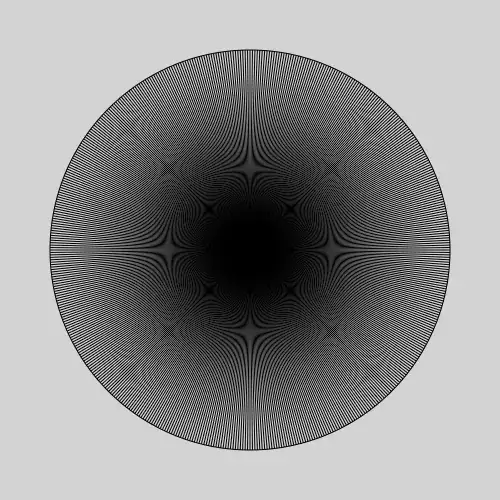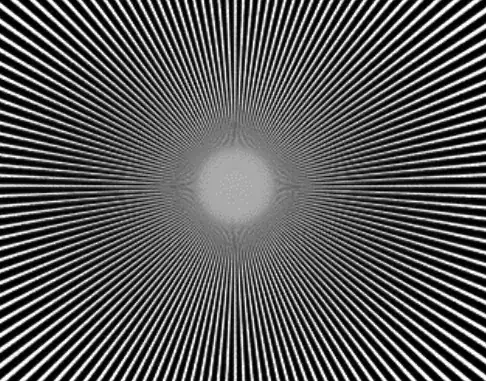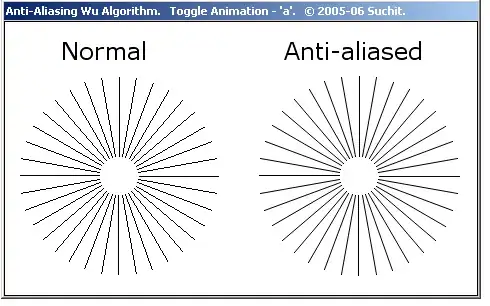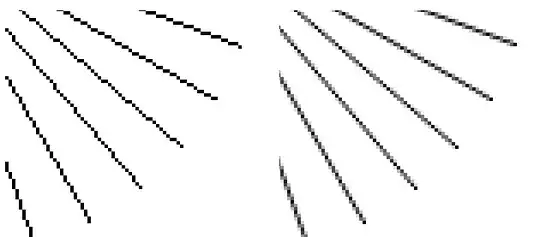The pattern formed is called Moire pattern which appears when two or more repetitive structures (such as screens, grids or gratings) are superposed or viewed against each other. This is an interference pattern produced between superposed layers with periodically modulated transmittance and close geometrical characteristics (period and orientation). The mathematical representation of such interference is the point-by-point multiplication of the reflectance/transmittance functions of the superposed (overlaped) gratings.
A simple example is obtained by taking two identical ruled transparent sheets of plastic, superposing them, and rotating one about its center as the other is held fixed as shown in the following figure:

The visual appearance of the Moire patterns depends on the characteristics of gratings and on the location of the observer. The visual displays can either be static or dynamic. The dynamic displays are CRT TV, LCD, and OLED, whereas static displays are a printed picture or photograph. In visual displays, the Moire effect may create undesirable visual effects.
Moire patterns can also be created by plotting series of curves on a computer screen. Here, the interference is provided by the discretization of the finite-sized pixels. A few more examples are as follows:






